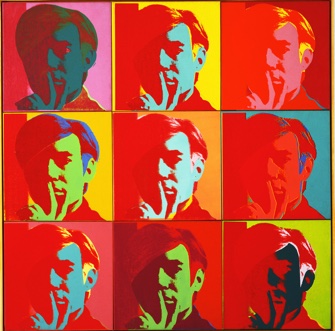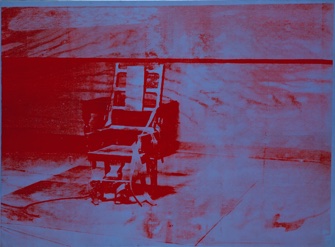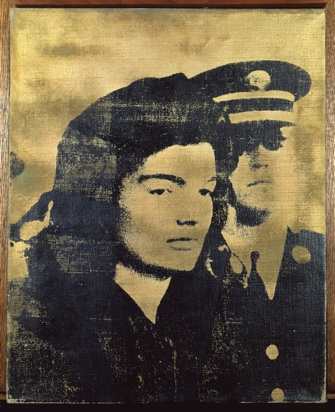
Some artists are so well known that it seems almost pointless to do yet another straight-forward exhibition of their work. But those big names bring in the bucks, so curators scrape
around for new exhibition angles. For Picasso, the Grand Palais solved the problem by showing the work of other artists influenced by the 20th-century master along with his own works in “Picasso Mania.” For Andy Warhol (1928-87), who is even more problematic in this sense because his work is so familiar and repetitive, the Musée d’Art Moderne de la Ville de Paris has made a virtue of that repeti-tiveness by focusing on his series in the exhibition “Warhol Unlimited.”
The show is built around one of the lesser-
known series, “Shadows” (1978-79), which Warhol, in his self-deprecating way (which somehow always sounded self-aggrandizing) described as simply “disco decor.” It is stunningly decorative as displayed in the museum’s huge curving gallery with its repeated abstract panels in mostly black,

slashed with acidic pinks, blues, greens, reds and the occasional splash of white.
This show is even more fun than “Picasso Mania,” primarily because Warhol was such an amusing person. The wall texts are well worth reading for the stories they tell about the works on show and the quotes from Warhol they include. Of the installation “Silver Clouds” (1966), he wrote: “I thought I was really really finished, so to mark the end of my art career I made silver pillows that you could just fill up like balloons and let fly away… But then the ‘Silver Space Pillows’ didn’t float away and my career didn’t float away, either.”
The show starts with his “Screen Tests” (1964-66), films of celebrities sitting silently in front of a camera. It’s fun to see many of them all together, creating a sort of living portrait gallery. It is also revealing of each subject’s personality. Dalí, not surprisingly, hams it up, while Bob Dylan, in dark glasses, sits as stiff as a statue far from the camera wearing a bored grimace on his face. He is so still that it’s kind of exciting when he twitches or moves a bit in his chair. In contrast, the animated Marcel Duchamp is seen in close-up, smiling, smoking and drinking.
The other series on show present other interesting contrasts. The “Electric Chairs” (1964-71), with their grim content in eerie color

combinations, hang in a room wallpapered with Warhol’s cheery “Cow” series.
Some introduce a note of tragedy or political commentary, such as the “Jackies” (1964), showing Jackie Kennedy just after the

assassination of her husband, and the “Maos” (1972-73), while others, such as Flowers (1964-65) and the aforementioned “Shadows” are purely decorative. The series are set up in such a way as to recall the first time they were shown in galleries and museums back in the 1960s, when their shock value was still great.
As the curators point out, by creating art in series and appropriating famous brands and images, beginning with his Campbell Soup cans and Brillo boxes, Warhol became an instantly recognizable brand himself. They have done a great job of recycling this familiar brand and making it newly fresh and enjoyable, although the controversy is long gone.
Today we, too, can become appropriators and “Warholize” our own photos, as in the image at the top of this page, on Apple’s Photo Booth app, a fact the artist would most likely have appreciated.
Favorite
